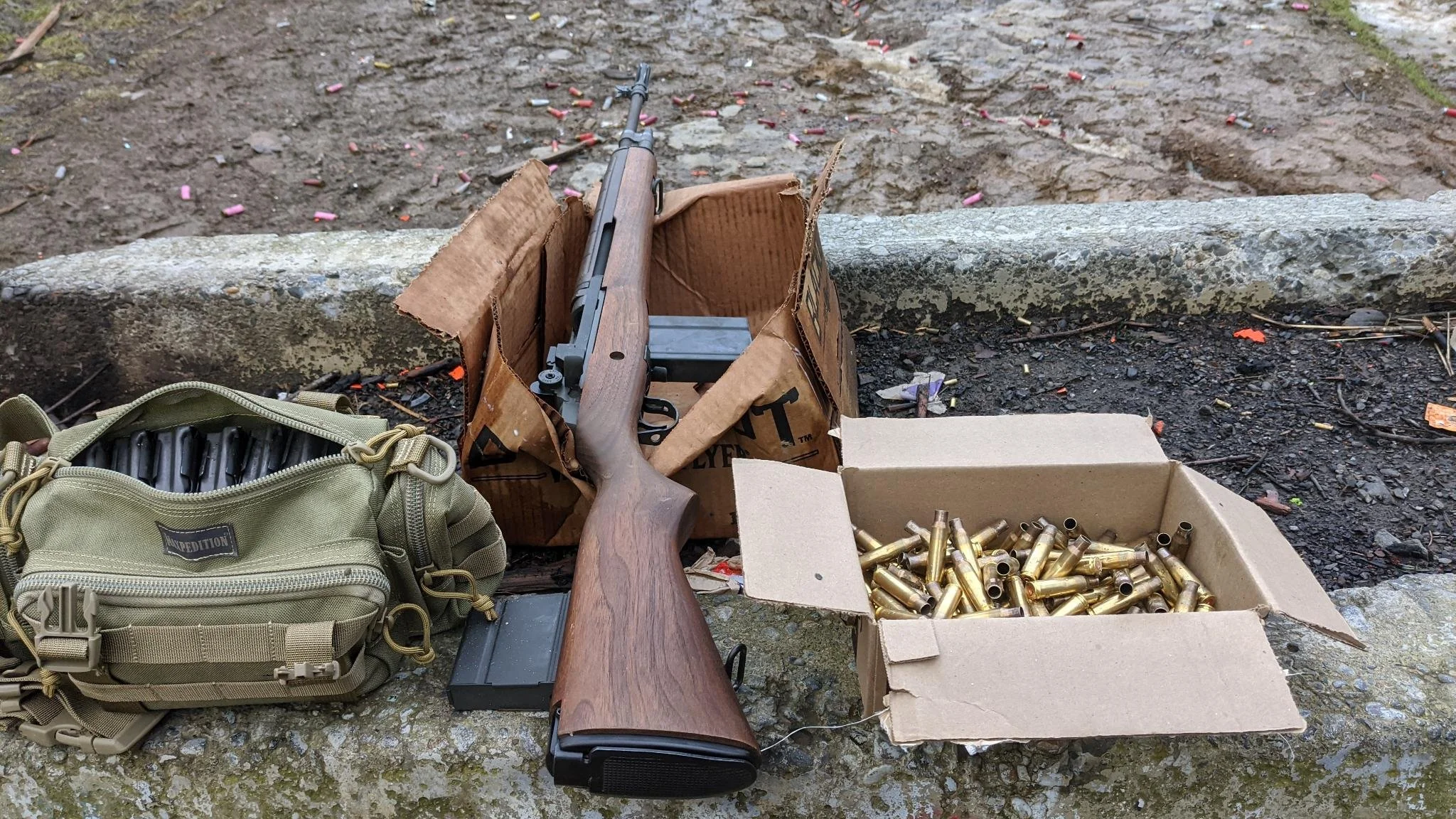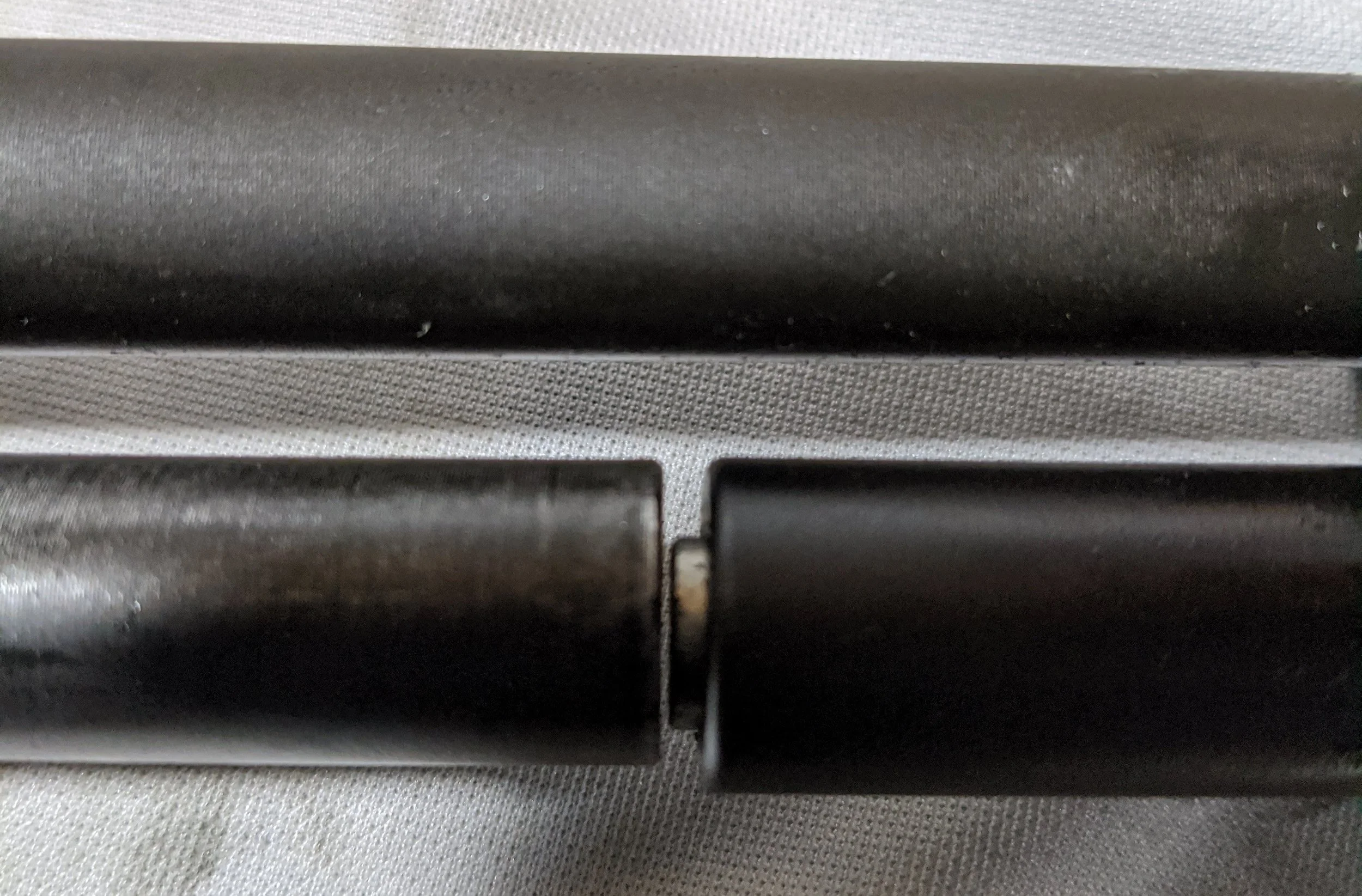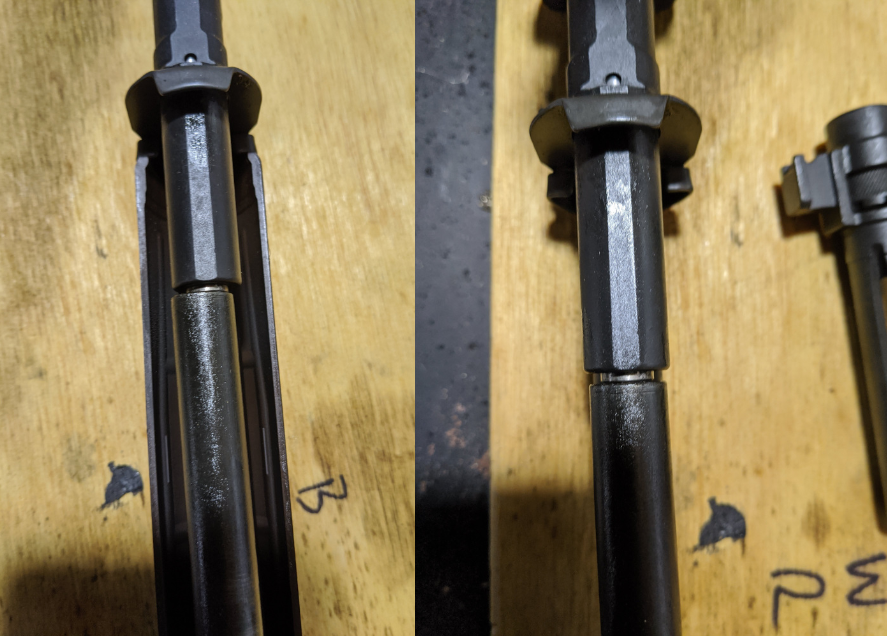My M1A Rifle (Problems and Mods)
This M1A’s first outing while in my possession.
I picked up a lightly used M1A late in 2024. I had considered a new rifle, but ended up finding my rifle on Gun Broker for a decent price with a nice walnut stock. I picked it up, cleaned it and lubricated it, and fired a few magazines through it to test function right after receiving it. I had already been cruising the M14 forums for a bit and had an idea of what I wanted to do, modification wise - the short list primarily consisted of shimming and tightening the gas system to smooth out the function and hopefully improve accuracy a bit. This is where the issues began.
Initially when I bought it, the M1A had marks on the forend from what I can only assume is shooting from a hard rest. It originally came with a scope mount base in place of the stripper clip charger, and my guess is that the previous owner shot it a few times and was less than thrilled with the accuracy of it, and put it up for auction. Once I got it to my bench, is when the problems arose.
The gap here is not conducive to good accuracy, as it allows the gas cylinder to slide forward and aft, changing it’s position on every shot.
As I set about shimming the gas cylinder and dialing in the timing of the rifle, it became apparent that something was off; the piston is supposed to be the hard stop against the operating rod, and in my rifle there was a noticeable gap between the op rod and piston. This is bad, because the operating rod is now coming to a hard stop against the roller on the bolt, which will damage the roller and bolt over time.
The gap apparent between the operating rod (L) and the gas piston (R), after all shims were removed again.
Immediately I brought this issue to the fine folks at the M14 forum, and after a bit of discussion, one of the members who is well-known for his prowess in working on these rifles came forward and informed me that it was more common than would be expected for Springfield Armory M1A operating rods to be shorter than what they should be. Following that, I pulled all the shims and put it back to factory original, sent it back to Springfield (on their dime, I might add… wonderful customer service considering I wasn’t the original owner) for it to be repaired.
A couple weeks went by, and with the rifle in my possession again, I (after inspecting the rifle) began working on shimming again. The operating rod had been replaced, evident by the lack of patina compared to the parkerizing on the rest of the rifle, and was now within spec. Using the the information gleaned from the M14 experts on the forum, I shimmed the gas block to the point where the operating rod stopped just shy of making contact with the roller, maximizing the travel of the operating rod before the bolt unlocked. This serves several functions - it smooths out the recoil impulse slightly by spreading it over a longer period of time (longer rearward travel before rotation of the bolt), and takes up a lot of the play between components, which allows for more consistency between all the operating parts while firing.
A shim was placed between the shoulder on the barrel and the handguard retainer, which then takes up the forward and aft play in the gas cylinder when the gas lock is tightened.
Also, while everything was apart, the splines in the barrel were slightly peened to true up the alignment of the operating rod. This also helps with consistency, as the slop between the cylinder and barrel splines allows for side-to-side play. Peening the splines helps lock the cylinder in place and dramatically reduces that play, which also helps with consistency.
Alignment of the operating rod, before (L) and after (R)
While this was done, the splines on the end of the barrel that hold the front sight and flash hider were also peened, reducing the side-to-side play in the front sight - a small but noticeable amount, and definitely hinders the accuracy potential. The original flash suppressor was also replaced with a standard unit with the bayonet lug included. The standard flash suppressor also has a slightly smaller internal diameter than the national match unit, so it’s important to ensure proper alignment if an M1A owner decides to do this on their own. In my case, everything aligned properly and the fit was tighter than the factory flash hider, which further reduced play in the front sight.
The last modification was the replacement of the factory recoil spring guide rod for a one piece machined part, which helps slightly to smooth out the operation of the rifle.
Immediately apparent was how nice the rifle felt when firing. Before, when the piston had to slam into the operating rod, the rifle felt almost jerky, and the recoil impulse felt sharp and aggressive (not punishing, by any means, but there was definitely an improvement in how the rifle felt when firing). Now, it had become far more pleasant, and accuracy had improved a fair bit. I unfortunately didn’t keep the target from the firing of this rifle after modifications, but the groups shrank from about 4” at 100 yards to a little over half that. Not an MOA rifle by any means, but the improvement in practical accuracy was pleasing to see. In the future, I will load some .308 ammunition and get something a bit more consistent to really test accuracy potential, but in my mind this is a fighting rifle, not a match rifle. I don’t care to develop a load that results in one hole at this time - I have other rifles for that purpose.
All in all, this has become one of my favorite .308 rifles to shoot, even over my beloved FALs. This rifle isn’t for everyone, but it is wonderful to shoot and feels like holding a piece of American history in your hands. I won’t get into the adoption of this rifle, as that has been covered plenty in the past, but I will say it is a fine way to get your feet wet with this style of rifle. It isn’t perfect, and a little tinkering is needed to improve it, but it isn’t a bad rifle at all.




